Selecting the right mattress for a child is a crucial decision that impacts their overall well-being. Parents often prioritize comfort and support in a mattress, ensuring a restful sleep that supports their child’s growth and development. While adult mattresses focus on alleviating aches and catering to larger bodies, children’s mattresses have different requirements. Stability around the edges and durable materials are essential for a child’s active lifestyle.
When shopping for a mattress for kids, factors such as material safety and suitability for a child’s age and sleep style are primary considerations. Mattresses that offer a balance of firmness and plushness cater to the varying needs of a growing child. Moreover, some mattresses have unique features to accommodate children as they age, such as flippable designs for adjustable firmness. Parents should consider the mattress’s longevity and potential to keep pace with their child’s growth.
Key Takeaways
- A child’s mattress should be comfortable and supportive for healthy development.
- Essential factors include material safety, appropriate firmness, and durability.
- Features like adjustable firmness can accommodate a child’s growth over time.
Table of Contents
Understanding Kids’ Mattress Fundamentals
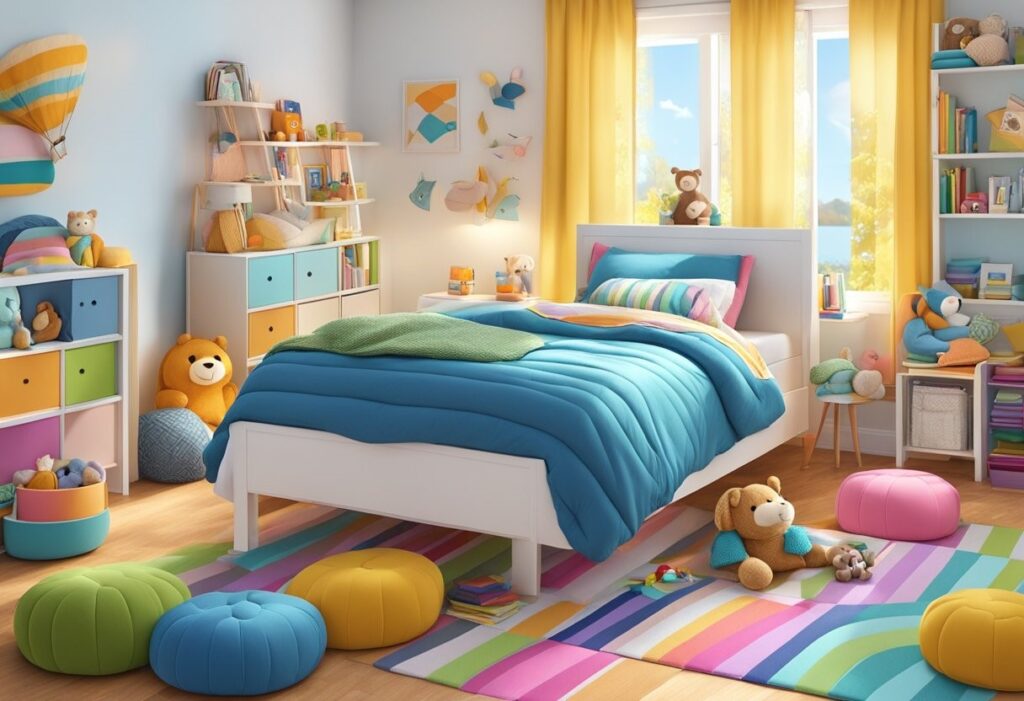
Choosing the right mattress for children is a critical decision that impacts their comfort and skeletal development. The selection process should include considerations such as mattress firmness, materials used, and relevant safety certifications.
Importance of Mattress Firmness for Kids
A medium-firm mattress is often recommended for children to support proper spinal alignment and provide adequate pressure relief. A mattress that is too soft may not offer the necessary support, while an excessively firm mattress could compromise comfort. Some mattresses feature a softer side for toddlers and a firmer side to support older children.
Mattress Types and Materials
The typical mattress types for kids include:
- Memory foam mattress: Known for its contouring and pressure relief abilities, providing a cozy feel.
- Innerspring mattress: The traditional choice, offering firm support and a bouncy feel.
- Latex mattresses: A responsive and durable option, sometimes used in an organic mattress.
- Hybrid mattress: Combines coils and foam, balancing support and comfort.
The choice among these materials will depend on the child’s preferences for firmness and the desired level of pressure relief.
Certifications and Safety Standards
Parents should be aware of several certifications when selecting mattresses:
- CertiPUR-US: Ensures the foam used in the mattress is free from harmful chemicals.
- Global Organic Textile Standard (GOTS): Indicates an organic mattress featuring textile materials of certified organic origin.
- Global Organic Latex Standard (GOLS): Similar to GOTS, but specifically for organic latex products.
- GREENGUARD Certification: The mattress meets stringent chemical emissions limits, contributing to healthier indoor environments.
- MADE SAFE: Identifies products made without ingredients known to harm human health or ecosystems.
Safety certifications help ensure that the best mattresses for kids are free from harmful substances and meet high-quality standards for health and safety.
Top Recommended Mattresses for Kids
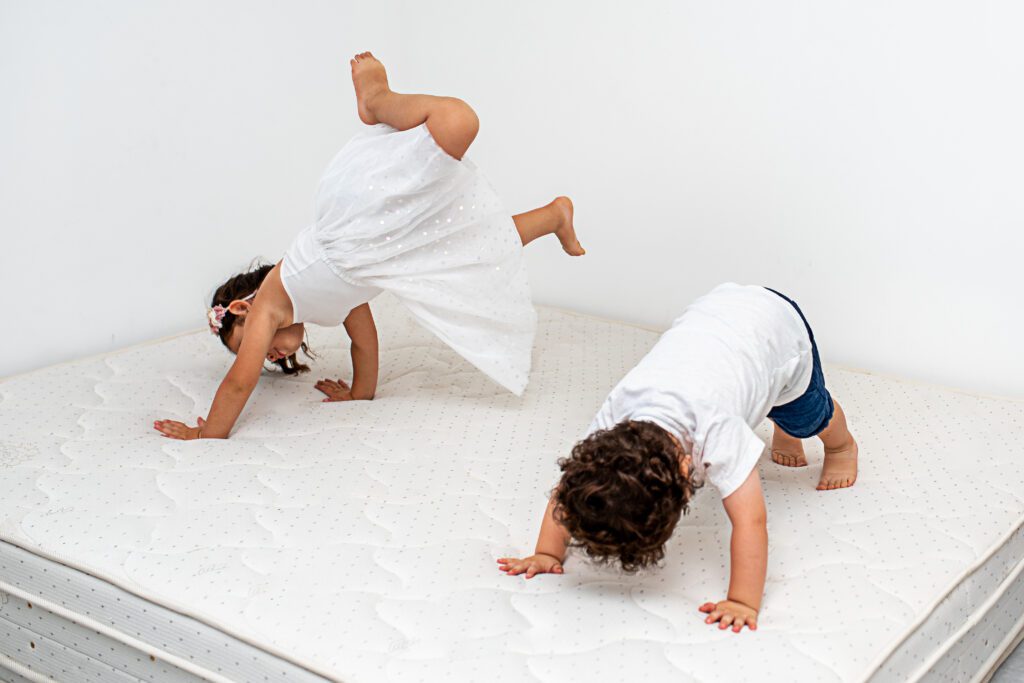
When choosing the best mattress for a child, parents often look for products that provide comfort and support through growth stages, align with health and safety standards, and offer good value for money. Here are top picks categorized to suit different needs and preferences in children’s mattresses.
Best Overall Mattress for Kids
The Helix Kids Mattress shines as the best overall option. Designed specifically for kids, it includes a dual-sided firmness feature — one side is firm and suitable for younger children, while the other can support older children’s needs.
Best Organic Mattresses for Kids
Regarding organic options, mattresses featuring organic materials, such as the Saatva Youth, stand out. They offer a layer of organic cotton cover, ensuring a healthy sleep environment, and they adhere to safety certifications that are important for children’s products.
Best Value Mattresses for Kids
For families seeking the best value mattress, options like the Siena Memory Foam Mattress balance quality and affordability. While not targeting kids exclusively, they deliver a comfortable sleep experience suitable for various ages and beds, including the best twin mattresses.
Best Mattresses for Growth Spurts
Mattresses that cater to growth spurts are crucial for adapting to a child’s growing and changing body. The Saatva Youth is designed to accommodate children from ages 3 to 12, making it an ideal choice through different stages of growth.
Best Mattresses for Bunk Beds
For bunk beds, the key considerations are height and firm mattress options to keep the top bunk safe. Mattresses with a lower profile are preferable for these settings to maintain safety rail effectiveness, and those like the Allswell often fit the bill.
Special Features in Kids’ Mattresses
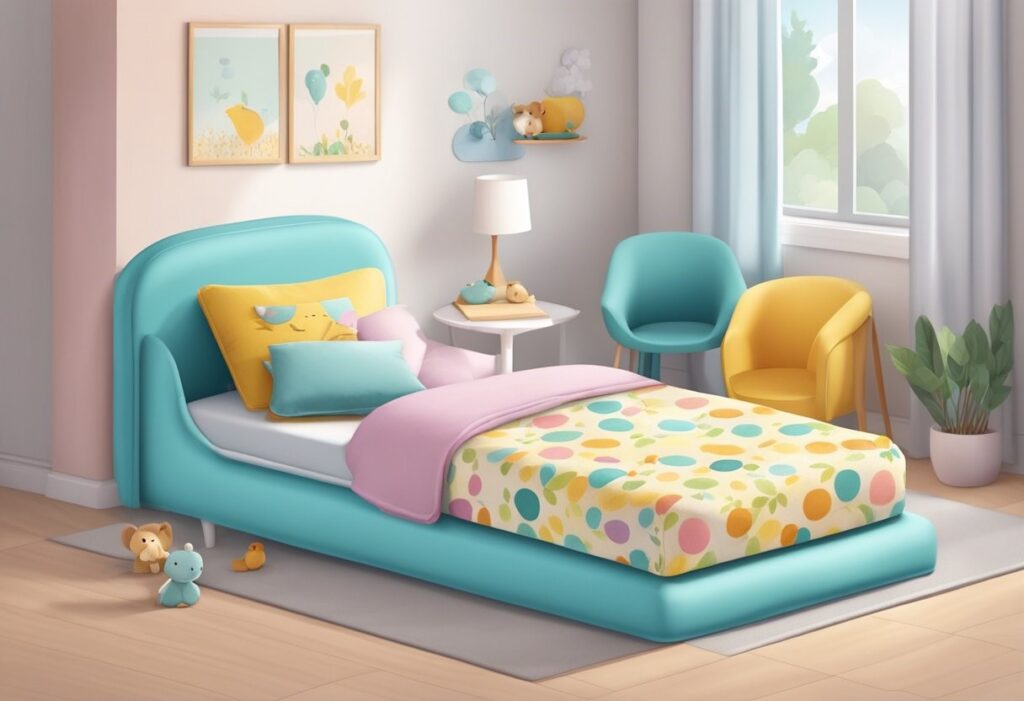
When selecting a mattress for children, it’s essential to consider their unique needs for support and comfort, which can contribute significantly to their growth and development. Mattresses for kids often come with specialized features that cater to their sleeping habits and health requirements.
Enhanced Comfort and Support Features
Kids’ mattresses are designed with enhanced comfort and support to adapt to a child’s growing body. Hybrid mattresses are particularly beneficial as they combine supportive coils with memory foam or latex layers for optimal pressure relief. The addition of a dual-sided hybrid design can offer varying levels of firmness that parents can flip depending on their child’s comfort needs.
Mattresses for Specific Sleeping Positions
It’s crucial for children, like adults, to have a mattress that supports their sleeping positions. Side sleepers benefit from mattresses that cushion the shoulders and hips, while back and stomach sleepers need firmer support to maintain spinal alignment. Look for products that specify suitability for various positions to ensure tailored support and comfort.
Cooling and Breathability
A good night’s sleep can be disrupted if a child overheats, so mattresses with cooling and breathability features are essential. Options include mattresses with temperature-regulating properties, such as gel-infused memory foam or breathable covers that enhance airflow and prevent heat retention.
Hypoallergenic and Antimicrobial Options
To reduce exposure to allergens and bacteria, children with allergies may need hypoallergenic and antimicrobial mattresses made from organic materials. These specialized mattresses often include natural fabrics and fillings, which are less likely to trigger allergic reactions and can help provide a cleaner sleeping environment.
Considerations for Durability and Longevity
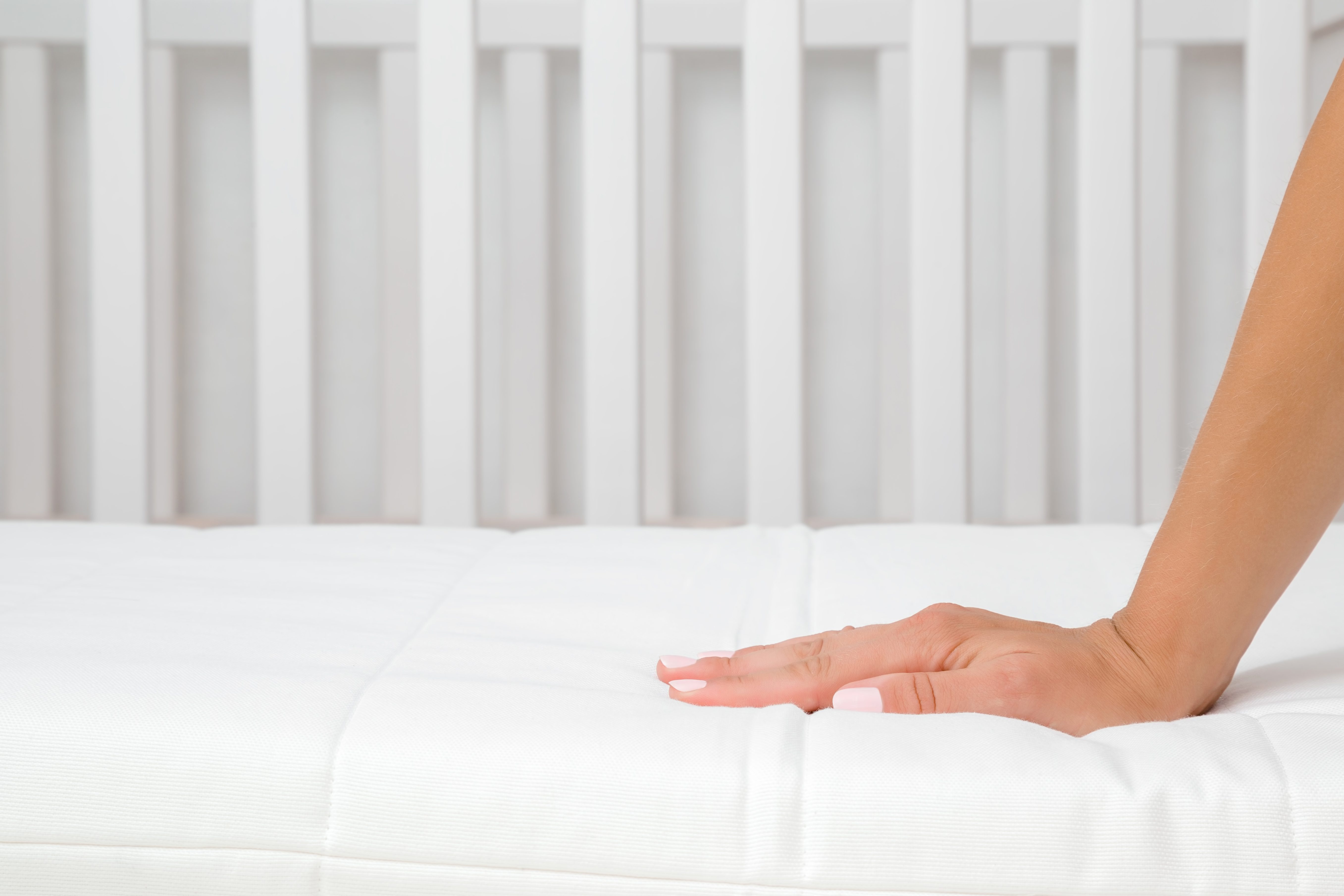
When selecting a mattress for a child, it’s essential to focus on durability and longevity to maintain its comfort and support over time. Durability directly influences the need for replacement and can affect the overall value of the purchase.
Assessing Mattress Durability
To gauge the durability of a child’s mattress, one should examine the materials used in its construction. High-density foams and thicker coils in innerspring models indicate a robust design built to withstand weight and movement over the years. Effective pressure relief is another aspect; it contributes to comfort and suggests that the mattress materials are resilient and less prone to sagging and indentations.
For example, hybrid mattresses that combine foam layers with a coil system may offer improved durability compared to all-foam options. Adding a sturdy base layer can enhance the mattress’s ability to hold up under constant use.
Warranty and Manufacturer Support
A comprehensive warranty can serve as a testament to a mattress’s longevity. Parents should look for companies that back their products with a lengthy or even lifetime warranty, which can speak to the product’s expected lifespan. It’s wise to read the fine print to understand what is covered, as warranties typically cover manufacturing defects, not normal wear and tear.
The presence of responsive customer service and clear warranty terms can signal reputable manufacturer support, potentially lessening future burdens if issues arise. Furthermore, one should note whether a brand operates on a commission-based sales model, as this might influence the information and recommendations provided by sales representatives. Ensuring endorsements and guidance received are based on product quality and not commission incentives is critical.
Additional Mattress Features and Benefits
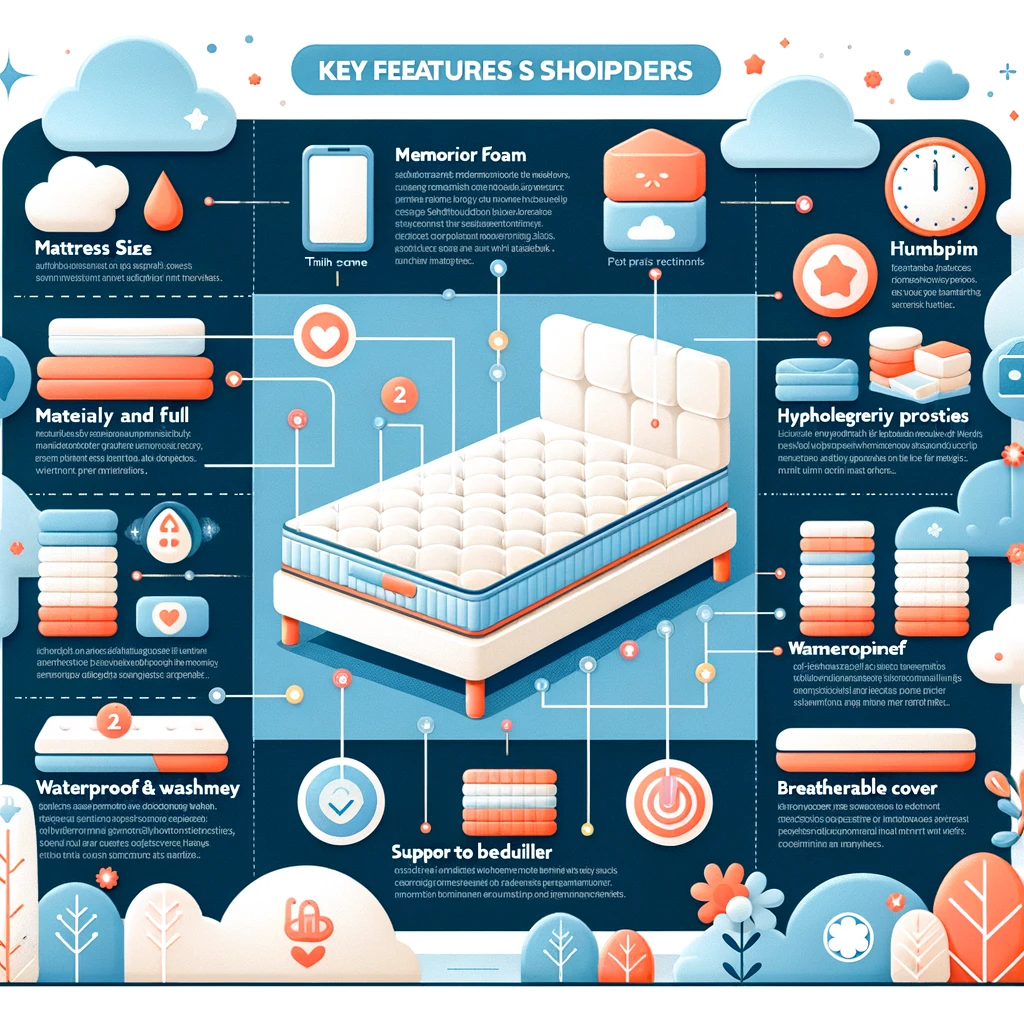
When searching for the best mattress for kids, it’s important to consider additional features and benefits that enhance comfort, durability, and safety.
Mattresses with Flippable Designs
Mattresses with flippable designs provide versatility and longevity, vital for children’s bedding. A flippable mattress might feature a firm side for proper support and a softer side for added comfort, accommodating the child’s growing needs. This design promotes even wear and extends the mattress’s lifespan.
Advanced Materials and Technologies
Modern mattresses for kids often incorporate advanced materials like Talalay latex and wrapped coils to ensure comfort and support. Talalay latex, known for its hypoallergenic and breathable properties, can relieve pressure while maintaining a resilient structure. Wrapped coils adapt to body contours while reducing motion transfer, making them ideal for restless sleepers.
Enhanced Safety Certifications
Safety is paramount for children’s mattresses, and many parents opt for products with enhanced safety certifications. Certifications such as CertiPUR-US and GREENGUARD Gold indicate the mattress meets stringent chemical emissions standards. An organic cotton cover or certified organic materials can minimize a child’s exposure to toxins, providing peace of mind alongside comfort.
Choosing the Right Mattress for Your Child
When selecting the best mattress for kids, one must consider the child’s age and specific needs to ensure optimal comfort and support.
Age-Appropriate Mattress Selection
Choosing a mattress that fits a child’s growth stage is crucial. For children between the ages of 3 and 12, the right mattress will vary in size and firmness as they grow. A mattress with dual firmness can adapt to their development, with a firmer side recommended for younger children and a softer side for older children.
- Ages 3-7: Opt for firmer support to align with their growing bodies.
- Ages 8-12: A medium-firm mattress can accommodate this period of rapid growth.
Mattresses for Children with Special Requirements
For children with special needs, select mattresses that cater to health conditions or sleep-related challenges. Options like mattresses designed for restless sleepers can offer increased comfort and improve sleep quality.
- Special Needs: Consider hypoallergenic materials or waterproof designs, such as a Naturepedic 2-In-1 Organic Kids Mattress, for children prone to allergies or accidents.
- Temperature Regulation: Mattresses with breathable materials help hot sleepers maintain a comfortable body temperature throughout the night.
Frequently Asked Questions
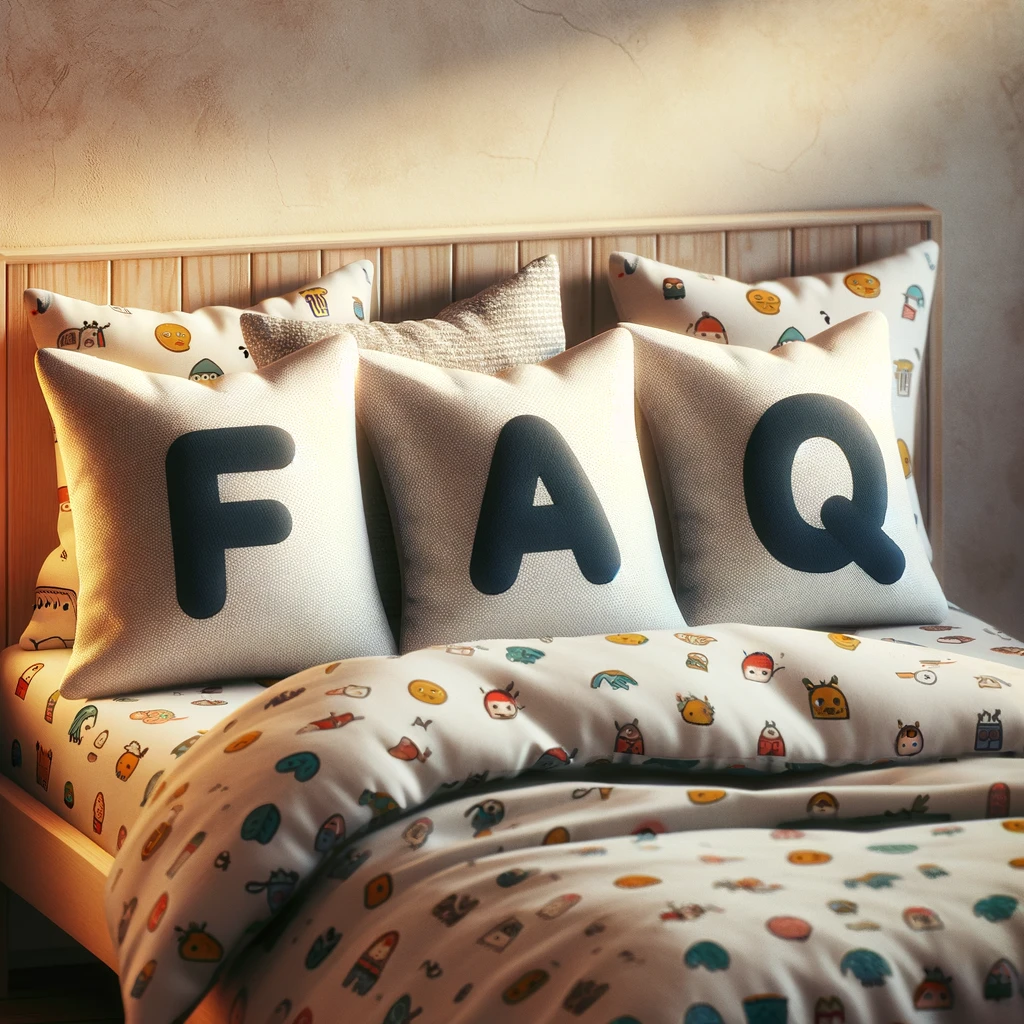
Choosing the right mattress for a child is crucial for their sleep quality and physical development. These FAQs aim to guide parents in making an informed decision.
How should I choose the right mattress for my toddler?
For toddlers, it is essential to select a mattress that provides a balance between comfort and support. The mattress should also be hypoallergenic and have a removable, washable cover to ensure cleanliness.
What factors are essential to consider when selecting a mattress for a 3-year-old?
When selecting a mattress for a 3-year-old, consider the mattress’s material, size, and durability. Safety features such as low VOC emissions are also important to ensure a healthy sleeping environment for the child.
Are there specific mattress types recommended for a 4-year-old?
Certain mattress types such as foam, hybrid, and latex are recommended for 4-year-olds due to their supportive nature, which benefits a growing child’s needs.
What are the benefits of a memory foam mattress versus a spring mattress for children?
Memory foam mattresses conform to the body’s shape and offer pressure relief, which benefits children. In contrast, spring mattresses provide firmer support and more bounce.
How do I determine the appropriate firmness level of a mattress for my child?
The appropriate firmness level for a mattress depends on your child’s weight and preferred sleeping position. A medium-firm mattress often works well, providing necessary support while being comfortable.
Which mattresses are considered the best for providing support to growing kids?
Mattresses that combine comfort, support, and durability, such as those found in particular expert-recommended mattresses for kids, are considered the best for growing kids, as they cater to the developmental stages of childhood.
For more information on sleep health for children, check out our post Sleep in Children and Adolescents: The Key to Optimal Growth and Learning – Sleep Health Network.

